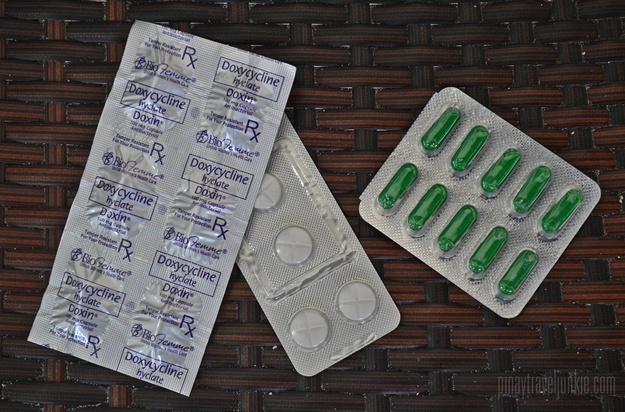
Today, a month after bidding farewell to the Republic of Kenya, we are finally off the pill. The anti-malaria pill, that is. We can now heave a sigh of relief. We can now say, we are malaria free.
And I’m doing me happy, dorky dance right now which you wouldn’t wanna see.
About three months ago, while we were still prepping for the East Africa trip in the Philippines, it’s a whole different depressing story. We got the visa thing covered (Australia and Philippine passport holders can access Kenya and Tanzania through visa-on-arrival) and we were able to find relatively cheap flights to Nairobi from Singapore. What stressed me most was finding malaria prophylaxis — a preventive treatment of malaria — in the Philippines.
Anti-malaria pills (malaria vaccines are still being developed) are available in the Philippines but a Herculean challenge to get one’s hands on. First, it is only available in a few pharmacies and second, you need to present a prescription for it. It is also expensive.
Why so? An official from Department of Health told me there’s high malaria risk only in specific areas on two Philippines islands: Mindoro and Palawan. Two out of 7,1++ islands. Doesn’t seem worrying, I reckon.
“Are you going to Palawan?”, that was the assumption of people from various departments of San Lazaro Hospital and Department of Health when I mentioned my need for a prescription for anti-malarials. Some would follow up with “You don’t need…” and I’d cut them off with “Africa”.
A couple of calls led me to San Lazaro Hospital. A facility for infectious/communicable diseases that is subsidized by the Philippine government. My inquiry over the phone with someone from the ‘out patient department’ suggested that my search may soon be over. We just had to drag our arses from the province to Manila.
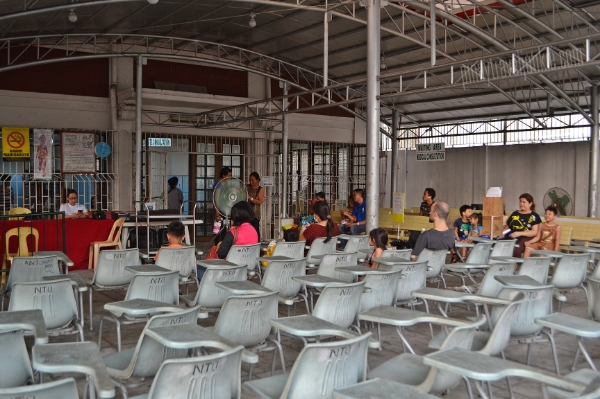
San Lazaro Hospital
For a public hospital, San Lazaro’s staff from guards to secretaries to outpatient nurses are warm and attentive. To my surprise. It didn’t take long for us to go through the whole shebang to see a doctor. We filled out the form, paid about P20 each for the consultation, gave accomplished form and receipt to a staff who looks like that creepy Agent Nelson Van Alden in Boardwalk Empire, and sat at the waiting area for our names to be called. When we were asked to come forward, we went through a quick physical exam which included a weight and height and blood pressure check. After which we were instructed to proceed to the main hospital building to see the doctor.
Quickly grabbed a mask for (P5 each) from the emergency room reception prior entering. Because two words: Infectious diseases.
At the time of consultation, doxycycline was (and prolly still is) the only anti-malarial drug available in the Philippines. Take note that there are different “strains” of malaria, and it is important to inform the doctor which country you’re headed to (hopefully your doctor is familiar with such info). Doxycycline is taken once a day. Two days prior travel, whole duration of the trip, plus thirty days after flying out (it should not be taken for more than four months). Yup, that’s a lot of pills. And it’s about P60 a pop. Do the math and be annoyed.
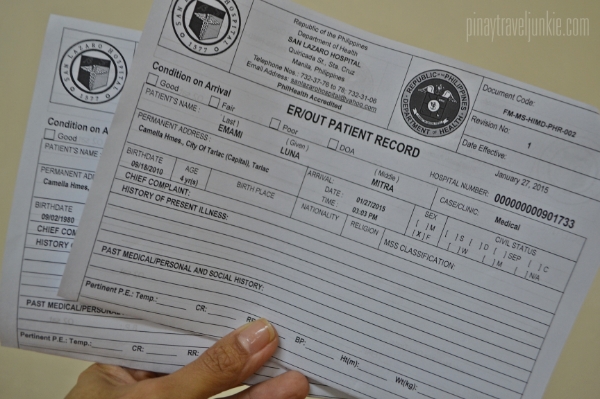
Anti-Malarial For Kids
Doxycycline should not be used by children younger than eight years old. For Luna’s anti-malarials, we were referred to the pediatric department where she was given a prescription for mefloquine. A drug we’re terrified of because of its side effects. Nausea and stomach pain and diarrhea, to name a tame few. Scarier ones include hallucinations and sleep disturbances. I imagined it as the Matrix’s red pill. It can show you how deep the rabbit hole goes.
Anyway.
Dosage of mefloquine depends on the weight of the child, so it is important for a doctor to do this calculation for you. The pediatrician who attended to Luna, judging by the number of minutes she spent on reading about anti-malarials, was probably prescribing the drug for the first time. She also made a miscalculation which her nurse corrected. Instead of the once-a-week dose, she scribbled ‘once a day’.
We did our research so we let her scramble for the details. We simply needed the prescription.
Mefloquine should not be taken for more than six months.
Where To Buy Anti-Malarials
Armed with prescriptions, we walked out of the hospital feeling somewhat unburdened. Unfortunately, we were smacked with a new complication when we were informed that the in-house pharmacy doesn’t actually have them in stock. Or maybe they don’t sell at all.
I was able to find doxycycline at Jose R. Reyes Memorial Medical Center next door but was only given thirty pills because even the pharmacist could not read the handwriting of the doctor. Like, seriously. We bought the rest in Kenya where it is cheaper.
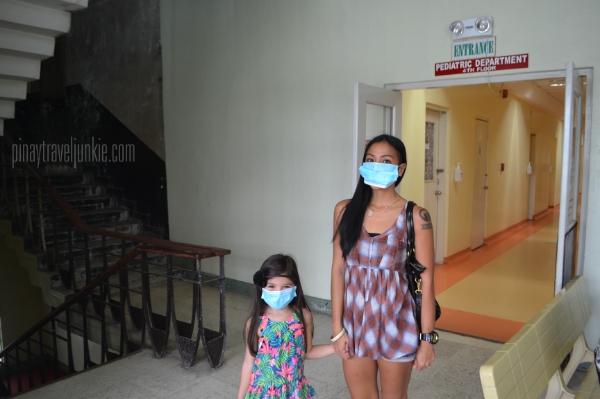
As for the mefloquine, after paying the Department of Health (just beside Jose R. Reyes Memorial Medical Center) a visit, I learned that only doxycycline is sold in the Philippines. I was also given a short lecture regarding malaria. I say that’s a thoughtful gesture by a government official.
We were able to buy mefloquine without prescription in Singapore.
End rant.
How To Get To San Lazaro Hospital:
Simply take the LRT and alight at Bambang Station. Walk a few meters to San Lazaro Hotel on Quiricada Street.
Phone number: +63 2 732 3776
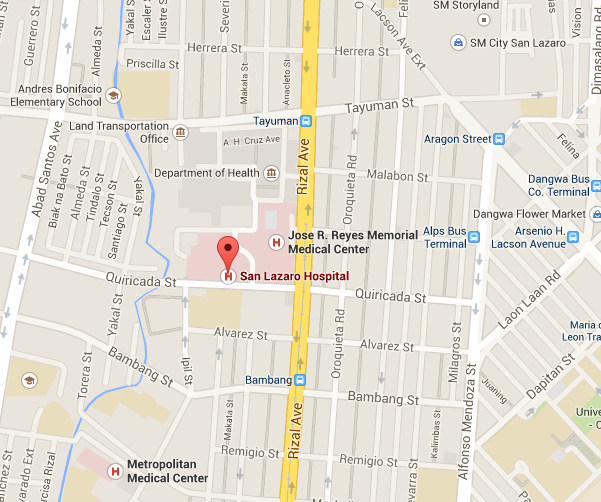

That is a heck of a lot of trouble, medical bureaucracy at its finest.
Doxycycline is so expensive, but in retrospect a lot of pills in the PH are cost prohibitive. So sad :'(
In Kenya it’s about P20 per pill but you take 2 a day. Still expensive but at least cheaper 🙂
Glad you made this post! You made me even more proud of you as a responsible traveler and a caring mom.
Prophylaxis against any endemic diseases is so important particularly when traveling and yes, more so with a young loved one.
Aww, thanks for the kind words, doc 🙂 We also waited for her 5th year para if ever something happens *knock on wood* she can handle it.